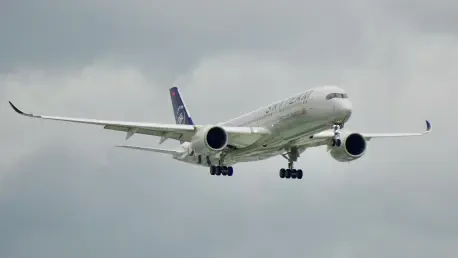In an era where automation and artificial intelligence are redefining boundaries, autonomous aviation stands at the cutting edge of innovation. However, this rapid evolution faces challenges, particularly in regulatory frameworks designed for human-operated flights. The International Underwriting Association (IUA) has emphasized the critical need for comprehensive regulations to ensure safety and legal clarity in this burgeoning domain. Addressing the complexities of AI-operated aircraft is vital for operational certainty and pivotal for engaging insurers seeking to develop products for air taxis and drone delivery systems.
The Necessity for Updated Regulations
Safety Concerns in Autonomous Aviation
The current regulatory environment, primarily designed for traditional aviation, lacks the specificity required for addressing the intricacies introduced by AI and autonomous systems. Human error, once the focal point of aviation safety, is gradually being replaced by software vulnerabilities and system failures as potential risks. Without rigorous regulations, the margin for errors could widen, significantly escalating safety concerns. The IUA has highlighted that regulations emphasizing early detection and mitigation of potential incidents are crucial to maintaining public trust and promoting safe skies. Notably, this includes redefining liability contexts to effectively distinguish between human and machine responsibilities.
A proactive regulatory approach would align with advancements seen in the automotive sector, where a tiered system assigns responsibility based on the level of automation. Applying a similar framework to aviation could redefine accountability, particularly as AI assumes roles traditionally handled by pilots. Such clarity is imperative for shaping the insurance landscape, enabling providers to offer adequate coverage options to businesses venturing into autonomous aviation. Consequently, an evolving legal framework is essential to protect both consumers and providers, laying a solid foundation for sustainable growth.
The Role of Insurers and Legal Certainty
Insurance companies play a pivotal role in the autonomous aviation sector, bridging the gap between innovation and risk management. However, their involvement heavily relies on a regulatory structure that clearly articulates legal liabilities and operational norms. Insurers require assurance that accountability is well-defined to effectively assess, manage, and underwrite risks related to unmanned aerial vehicles. The IUA believes that addressing these legal uncertainties will enhance opportunities for market participation, encouraging providers to create innovative insurance solutions tailored to new technologies. These advancements would mark a significant stride towards a resilient industry where insurers confidently partake in this space.
The Law Commission’s consultation, driven by directives from the Civil Aviation Authority and Department for Transport, signifies the urgency expressed by multiple stakeholders. Their collective sentiment necessitates that regulations evolve swiftly alongside technological advancements. Moreover, adopting lessons from other automated industries provides a blueprint for crafting rules that accommodate and anticipate the challenges posed by AI. A forward-thinking regulatory model is crucial to prevent discrepancies and ensure seamless adaptation to shifting technological paradigms.
Shifting Accountability in AI-Driven Aviation
Adapting Liability Frameworks
As artificial intelligence becomes increasingly integrated into aviation operations, traditional notions of liability face significant transformation. The shift from human-centric to AI-managed operations necessitates rethinking liability dynamics, where software developers may bear equivalent accountability to pilots. This necessitates robust product liability frameworks adapted to accommodate AI’s growing influence. Recognizing this, the IUA has stressed the importance of a legal environment flexible enough to address the nuanced challenges posed by autonomous capabilities, safeguarding both innovation and public safety.
Drawing parallels to the automotive sector, where varying levels of automation dictate responsibility, provides a promising model for aviation. Such a framework serves as guidance for industry stakeholders navigating the transition towards AI-driven flight operations. Amidst these developments, the IUA emphasizes that regulatory clarity is indispensable for fostering transparency and guiding future advancements. A properly defined liability structure would not only incentivize innovation but also delineate clear accountability, ensuring that technological progression does not compromise ethical standards.
Ensuring Public Trust and Industry Growth
Public trust remains a critical component in the development of any pioneering technology. The autonomous aviation industry’s success is contingent upon its ability to assure the public of its safety and reliability standards. This involves establishing mechanisms for early-stage incident handling and implementing a regulatory regime that mitigates risks effectively. Regulation-inspired operational certainty would encourage insurer participation, unlocking market potential for products suited to AI-powered aviation solutions.
Tom Hughes, director of underwriting at the IUA, advocates that creating robust regulatory frameworks early in the development cycle is vital for confidently inviting broader market engagement. The symbiotic relationship between regulation and technological progress must be nurtured, ensuring that innovation is guided responsibly. The potential for industry growth hinges on the collaboration of insurers, aviation stakeholders, and regulatory bodies, all working towards a common goal of advancing autonomous aviation responsibly.
Regulatory Evolution and the Path Forward
In a time where automation and artificial intelligence are reshaping industries, autonomous aviation stands at the forefront of innovation. Despite its promise, this rapid advancement is hindered by significant challenges, chiefly in regulatory frameworks designed primarily for traditional human-operated flights. The International Underwriting Association (IUA) highlights the urgent need for robust regulations to ensure safety and legal clarity in this evolving field. Adapting these frameworks to accommodate AI-operated aircraft is crucial not only for operational reliability but also essential for attracting insurers interested in creating products tailored for air taxis and drone delivery systems. As aviation continues its shift towards autonomy, addressing these regulatory complexities will be essential for fostering a safe and sustainable environment that encourages innovation. Without appropriate regulations, this burgeoning domain could face roadblocks that stifle progress and potential growth in the industry.









